

In spite of the volume of posts written about how to become a digital nomad in 2023, I find them relatively thin and not as straightforward as they could be (or they cost money).
This is my take on the digital nomad lifestyle after dozens of personal calls with Hobo readers and being location independent for over six years –two decades if you count my constant relocations in Canada before picking up a one-way ticket to Thailand.
This article is our first that’s available as a text-to-speech on Soundcloud. Click the play button below to listen in.
Table of Contents
Article updated on June 8, 2023. This guide is a small part of a broader information resource that you can find here.
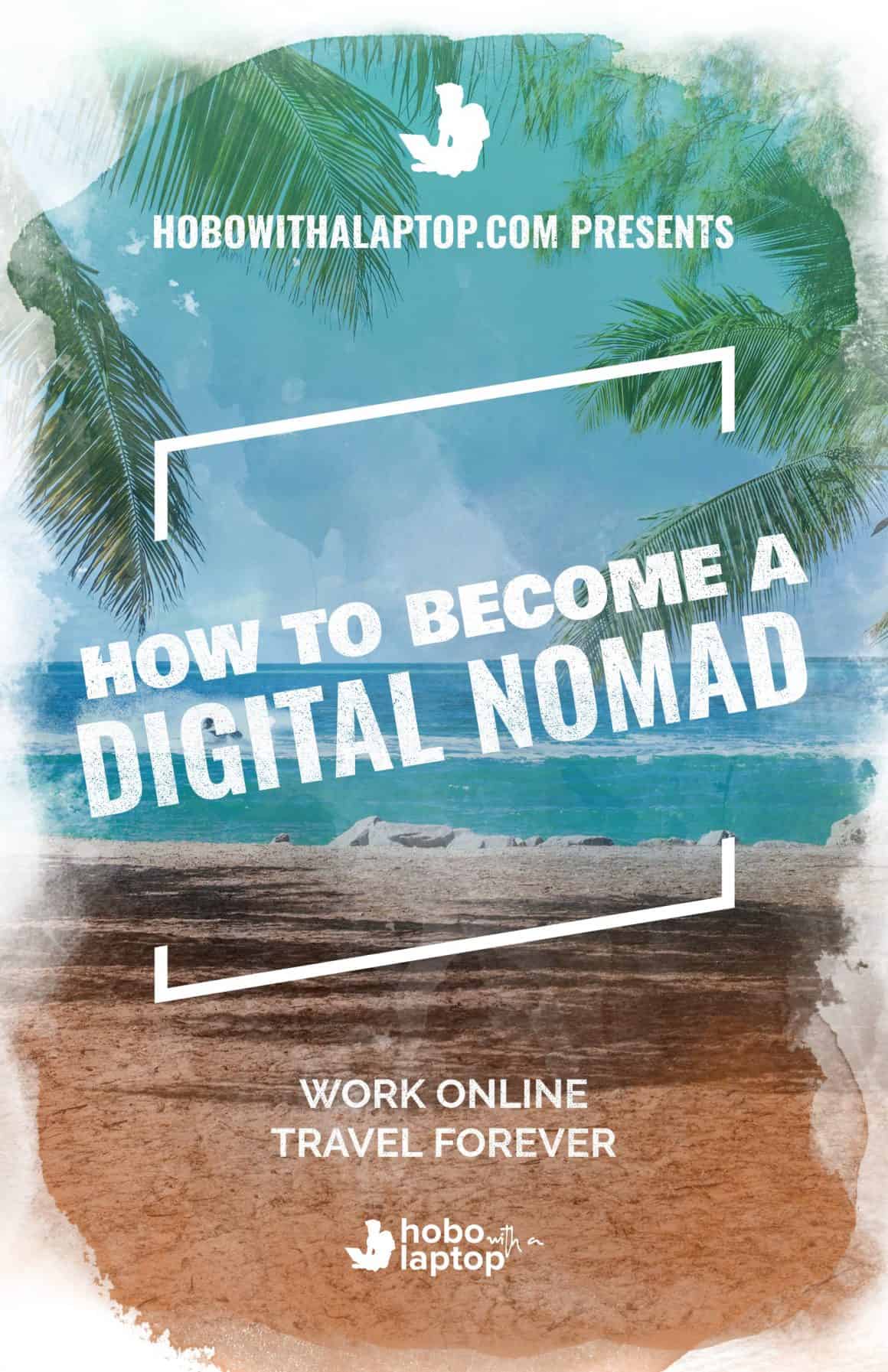
Why Become a Digital Nomad?
Becoming a digital nomad has its perks, sure. Remote work, tropical places, travel the world and get paid while you’re on the go. Earn a higher value currency online from a country like the US, and live in another country where that currency goes further. Save more money every month for retirement, live almost anywhere in the world, and live well; that’s the digital nomad lifestyle.
But becoming a digital nomad isn’t just for young progressive types. Learning to work remotely and become location independent could soon be your only option to maintain your livelihood.
Ass-in-chair jobs are disappearing along with the office rentals that surround them. Blue collar and white collar jobs are threatened, and governments can’t keep on bailing everyone out.
Right now small and medium-sized businesses are competing with larger competitors that are doubling down on automation and artificial intelligence, while choking down a new increased minimum wage mandate.
As a result, businesses are downsizing or ditching their offices altogether, and hiring remote workers as opposed to on-site employees in an effort to reduce overhead and remain profitable.
Becoming a digital nomad might just extend your career another 5 to 10 years. And it might be best to get ahead of that curve before the guillotine drops.
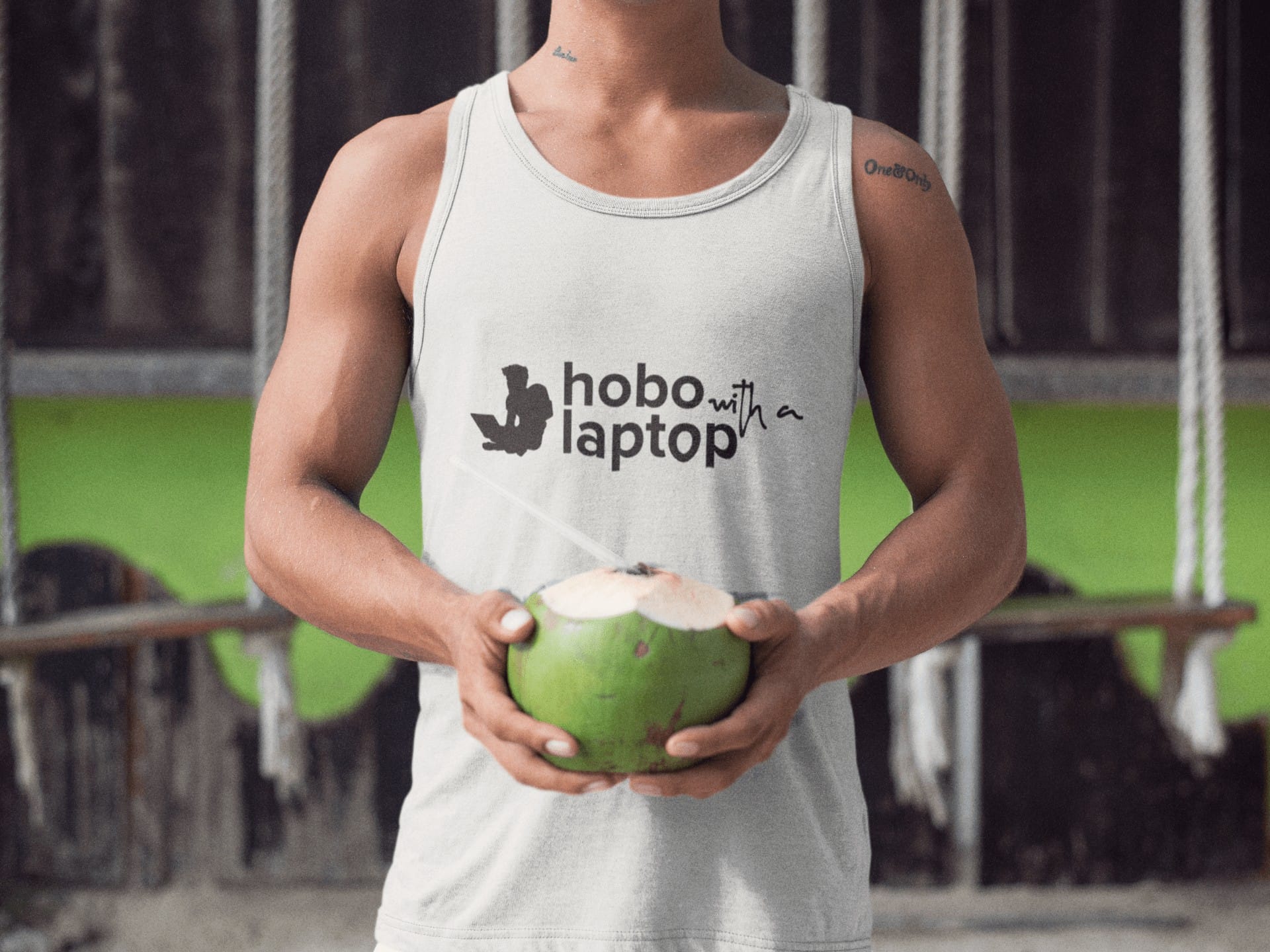
Digital Nomads at a Glance
In this article we’ll look at a bunch of logistics for absolute beginners to the nomadic lifestyle and provide enough information to help anyone figure out how to become a digital nomad.
And don’t just take it from me –there’s a lot of other reasons why people are adopting a nomadic lifestyle. According to a survey of 500 digital nomads that was conducted by FlexJobs in late 2018:
- Main reasons why people want to learn how to become digital nomads include work-life balance (73%), enjoy the freedom (68%), love to travel (55%), avoid office politics and distractions of a traditional work environment (43%), want to explore other cultures (37%), high cost of living in home country (30%), poor local job market in hometown (24%)
- Top benefits of being a digital nomad are the flexible schedule (85%); no commuting (65%); freedom to live and work where I choose (65%), work-life balance (63%); no office politics (52%); no dressing up for work (51%)
- Top challenges for digital nomads are finding reliable Wi-Fi (52%); finding a good place to work (42%), networking (35%), time zones (29%), work communications (20%)
- 92% of digital nomads say the lifestyle is important to them
- 88% report that being a digital nomad has had a huge improvement or positive impact on their lives
- 18% of working nomads report making six figures or more and 22% make between $50,000 and $99,999. According to the Social Security Administration, the average U.S. worker today earns roughly $46,641 a year
- 31% of working nomads make similar amounts of money, and 18% make more money as a digital nomad than when they worked traditionally
- 38% say they feel less stressed financially being a digital nomad and 34% say there is no difference in financial stress than when they worked a traditional job
You can find the original survey data by FlexJobs here.

Nomadic Lifestyle, Explained
This guide to location independence will cover everything you need to know to become a digital nomad and take part in what could be our generation’s fastest-growing lifestyle choice behind the tiny house movement, van life, and living in our parent’s basements.
We already have tons of in-depth articles covering most of the concerns listed in the above survey results, so anything not covered in this article can be ironed out by reading our related content.
Pros and Cons
Before you become a digital nomad, you’ll likely want to measure the pros and cons of the lifestyle. Local nomads often face a wide range of time vampires that they never knew existed; that is the price one will pay for living a lifestyle that most people envy yet are too afraid to live.
Perspectives Matter
In order to keep your head up and your spirit high, you’ll need to have the right perspective.
- Can you be a patient, methodical, opportunistic, self-motivated hustler?
- Do you have a strong sense of purpose, goals, and what you want from life?
- Can you adjust to situations quickly and compassionately?
- Do you have decision making skills, planning skills, and the discipline to abide by them?
- Are you able to tough it out if your laptop dies right before your bank card gets jammed in a machine at the Laos border during a visa run? (That probably won’t happen, but it happened to me in 2014).
If you answered yes to most of these, you’ll fair much better when we look at the following pros and cons of work and travel.
In reality, for every pro (glass half full) there is a con (glass half empty) so be mindful of how you perceive these pros and cons. Don’t let an over-eagerness force you to skim over hidden complexities and take them head on.
The Pros and Cons of the Digital Nomad Lifestyle
Before you become a digital nomad, you’ll have to decipher the hype;
- Work from anywhere! (You’re pretty much homeless!)
- Make your own schedule! (Crappy routine at best, responsible for your own success, and liable for your own failures)
- Short work days! (Added pressure on executing the 80/20 rule effectively)
- Choose to live anywhere you want in the world! (Struggle with visa requirements, time zones, generally meet clients face-to-face less often)
- Make new connections! (Have less time or ‘presence’ for existing friends and family)
- Unlimited earning potential! (Financial security is less predictable)
- Finally time to start that side project! (Remove time from proven, repeatable income)
- Hooray, palm trees and wanderlust! (Deal with periodic loneliness, unpredictable weather and infrastructure challenges)
- Cheaper cost of living! (Cost benefits only while you’re living statically in one place, travel can be expensive)
This an excerpt from Digital Nomad Escape Plan: From Cubicle to Chiang Mai, Thailand. Download it today, and keep it for later.
Digital Nomad Guide Series
Here’s a few guides you could add to Pocket for later, they’re mentioned throughout this article.
- How to Get Part Time Remote Jobs Faster
- Helpful Digital Nomad Skills for Work and Travel
- Our Digital Nomad Packing List After 7+ Years on the Road
- How to Get an Entry-Level Remote Job
- Big Fat List of Unique Travel Gifts for Digital Nomads
- Improve Work Communications with this List of 60+ Tools
- How to Get Housesitting Jobs for Free Accommodation Globally
- Guide to Digital Nomad Insurance
- How to Speed Up Your Internet Connection
- Tips for networking with other Digital Nomads
- How to Become a Nomad Family and Travel with Kids
- How to Handle Criticism for Becoming a Digital Nomad
- 30 Obstacles to Becoming a Digital Nomad
- Digital Nomad Reading List: A Collection of Amazon Best-Sellers
These are only a handful of digital nomad blog posts we’ve written –tap one of the links above or explore Hobo with a Laptop for more.
If you’re heading to Chiang Mai, Thailand specifically, we’ve also got a free 200-page guide for you.
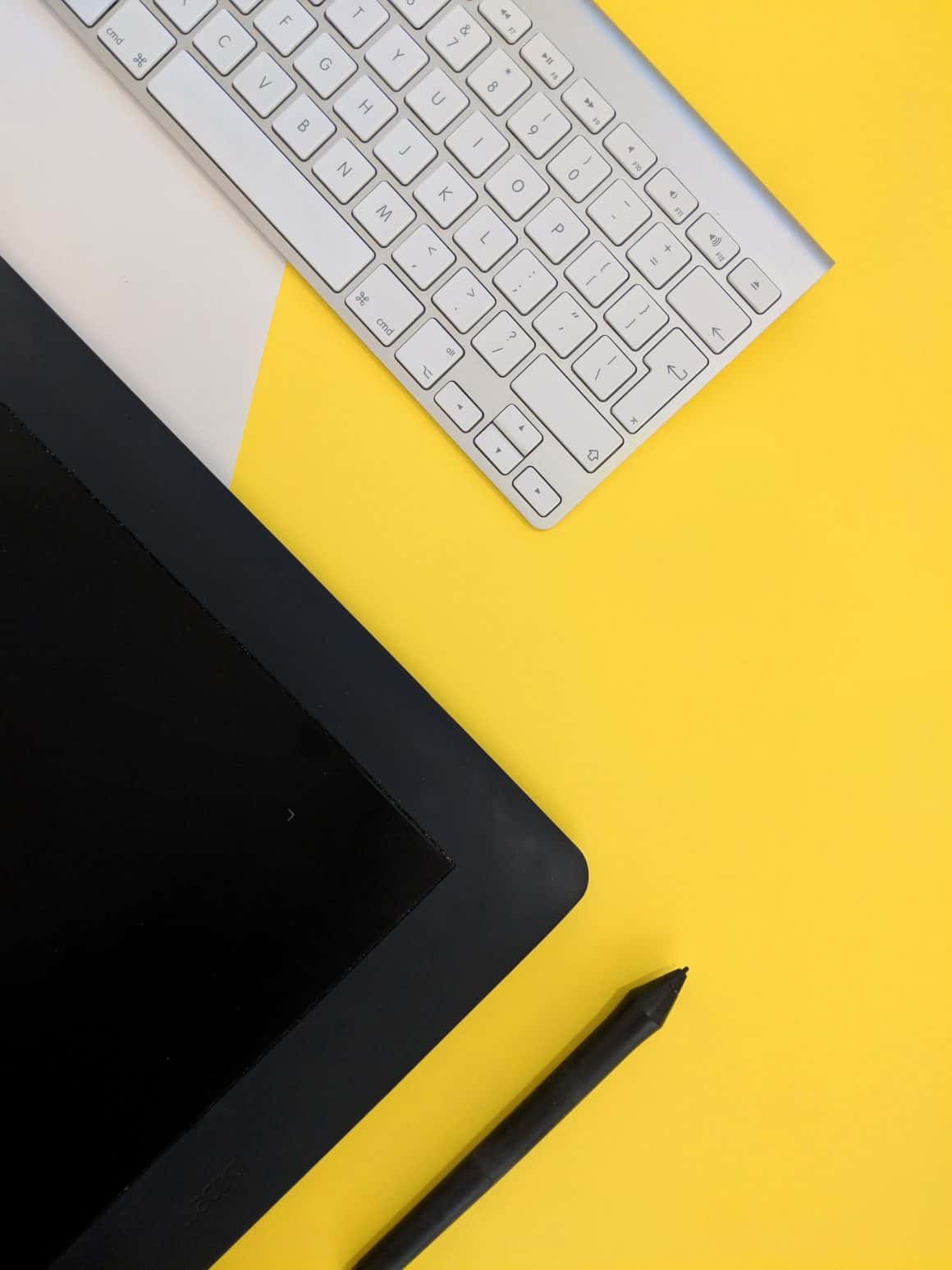
How to Become a Digital Nomad
I officially decided to become a digital nomad in 2011, but the gears had already been moving in this direction for over a decade. I traveled a lot in my home country, relocating often. I moved out of my folks’ place just before my 19th birthday and I was a bit of a mess.
I’d move for love, I’d move for a new job, I’d move for the culture shift, I’d move to tear the page out and start over.
And every time I thought “I’ll stay this time”.
It never happened. My first decade of moving around involved furnishing every apartment I moved into to retain a sense of normalcy, and then selling it all off at loss a year or two later when I decided to leave.
It was only when I came across a digital nomad blog in 2011 while living in a condo in Toronto that I could finally put a label on what I thought was insanity. It was then that I decided I wanted to learn how to be a digital nomad.
Relocating often makes you look like a flake when you can’t put a label on it.
The definition for “digital nomad” rescued me. People could Google it. I was part of a group, I was sheltered from the shame of long-standing social norms. I was part of a new one.
Today I’m 38, and I wish I’d known then what I know now about being location independent.
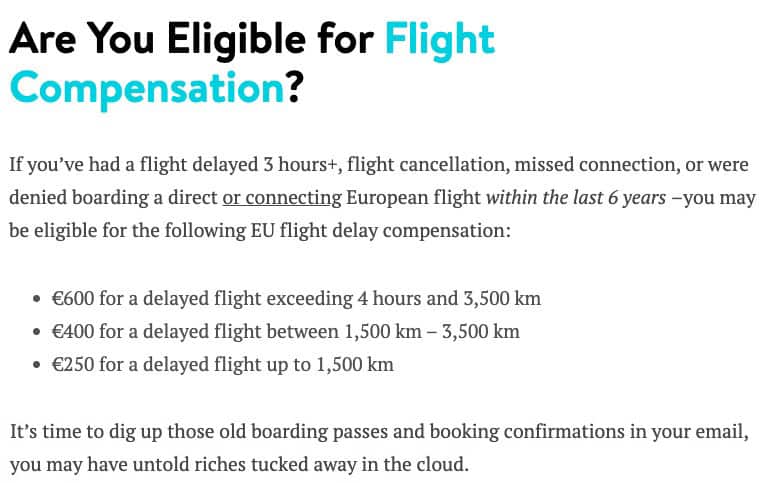
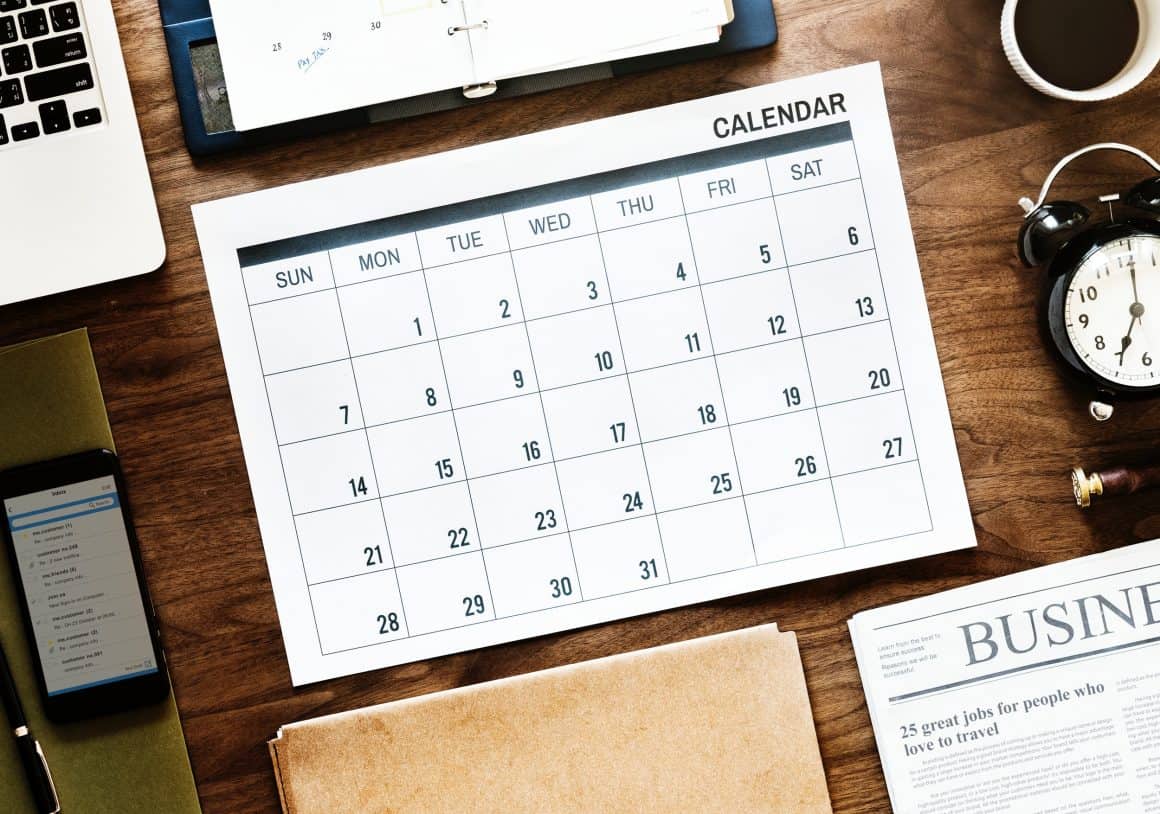
1. Logistics
You’ve got your reasons for wanting to learn how to become a digital nomad, that’s none of my business. Let’s skip the why and jump into how you can become location independent.
First we’ll look at the ingredients, then we’ll look at how they come together.
Important Accounts and Government Documents
All digital nomads are going to need a whole bunch of moving parts to stand on in order to be location independent. Here’s a complete list of all the accounts and government documents you need, at a minimum.
You should start getting these items together at your earliest convenience:
- Passport
- Business license
- Local bank account, PayPal account, and Transferwise Borderless Banking account or Payoneer account
- Skype and/or Grasshopper for local number and VOIP
- International internet connection
- Earth Class Mail for a US mailing address
- Nomad insurance
- Driver’s License
- Emergency fund
- Doctor’s notes, prescription(s)
Business License
Every country has different rules for how much a sole proprietor can make before they need to start charging and paying taxes. If you make under a certain amount, you can forgo the business license and operate as a sole proprietor.
On official documents and forms, a sole proprietor simply puts their full name in the “company” field. It’s as easy as that. Read our digital nomad taxes FAQ for US expats, or explore tax laws for your country on your own.
Don’t overlook your business license, but don’t make it a barrier for entry, either. A lot of us jump first and ask questions later. By the time you’re making enough money for digital nomad taxes to be a concern, you can afford to play catchup.
Nomad Taxes & Bookkeeping
I highly recommend that you get in touch with a certified tax professional online by the time you’ve made your first $1,000 with your remote job, side hustle, blog –you name it.
While you won’t need to file taxes right away in most cases, you will need to keep your books clean or else.
We made the very costly mistake of not keeping our books organized over a number of years, and recently had to pay $10k CAD in taxes because we came up short with reciepts and so on. It was a total shit show.
Don’t leave money on the table, at the very least consider a service like TaxHub to protect your finances from government clutches.
Banking Solutions
The reason there’s a whole pile of banking solutions on this list is because there’s no one-size-fits-all solution for international expats. It’s possible to sign up for these while you’re abroad, but I recommend doing so right away while you’re still in your home country.
Apply for a credit card in your home country if you can. I haven’t had one for years because I’m debt free and prefer cash or prepaid Mastercards, but a credit card with travel miles will make your life easier and it’s great in emergencies.
PayPal is commonly used for client invoicing, from there you can deposit your money into a bank account from your home country. You can only deposit money into a proper bank account if the address and name match perfectly to the one you signed up with PayPal.
Transferwise Borderless Banking is the best international bank for US and UK digital nomads, Payoneer is the best nomad bank for everyone else (like Canadians, Indians, Filipinos, you name it).
In Canada, there’s a new prepaid VISA card we use called KOHO that’s worth looking at.
Both will allow you to create a legitimate bank account number in other countries so you can bank like a local –the main one being the US.
Simply put; non-US citizens can open US bank accounts and accept money from US companies easily. It’s a must if you work online or have affiliate websites. Both digital nomad-friendly banks will ship you a physical bank card to wherever you might be.
Learn more about Transferwise and Payoneer respectively.
Local Number and VOIP
Reliability is the name of the game; changing your number frequently or not having one at all isn’t wise.
I suggest you prepay a full year or more in advance, and consider getting Grasshopper if you want the most comprehensive VOIP solution money can buy. Grasshopper is ideal if you’re looking for a 1-800 number.
Location independent Canadians are also advised to look at Dell Voice, also known as Fongo. It’s a mobile app for iOS and Android that has free and paid options for a Canadian number. I have this as a backup.
Some countries can port their existing number to Skype or Grasshopper –but if you come from a monopolistic country like Canada, you might want to settle for a 646 New York number or use Dell Voice (Fongo) as mentioned above.
International Internet Connection
How much does a digital nomad make? Nothing if they don’t have internet access.
Don’t chance it; have backup plans for your backup plans if you’re going to be location independent. I could have left this in the nomad gear part of this guide, but it’s too important.
I recommend Skyroam; a prepaid mobile hotspot that works internationally for up to 5 devices and doesn’t come with a contract. Pick one up as soon as you can and only top it up when you need it to save money. Unlimited day passes are $9 per day –money well spent.
You can find out more about Skyroam here. Hobo with a Laptop readers get an exclusive discount with promo code HOBOLAPTOP.
US Mailing Address
Earth Class Mail is a private mailbox provider that is more nomad-friendly than a traditional PO box. Anyone from around the world can get a mailing address in the US with Earth Class Mail.
Additional services that are helpful for location independent people include depositing any physical checks you get in the mail for you, scanning and emailing all paper mail, and forwarding physical deliveries to another address on file.
Nomad Insurance
“Nomad insurance” to me is any form of low-cost insurance that:
- Serves everyone regardless of what country they come from
- Provides both health and travel insurance
- Covers the nomad gear in your backpack
- Allows you to sign up online from anywhere, at any time
I’ve used World Nomads for this because they’re quite comprehensive –although we’ve compared them with SafetyWing, another popular (and very economical) nomad insurance provider.
Read our nomad insurance guide for more information.
While you might not be ready to sign up for nomad insurance today, it’s important to do your research as early on as possible so you can budget for it.
If you’re leaving next June, you could pay in advance and have coverage take effect next June. In other words, coverage begins when you want it to, not the moment you pay for it.
Driver’s License
In Asia, it’s not hard to rent a motorbike without a license but I am not suggesting you do. Get a driver’s license and a motorcycle license in your home country before you go, if possible.
Most countries accept licenses from other countries to rent a vehicle, however, an international driver’s license would make things even easier.
Beyond driving, a driver’s license is just another really handy form of ID to have on hand when applying for accounts online, renting a hotel room, and so on. Otherwise you might have to let them hold your passport, and technically that’s against the law in your home country.
Emergency Fund
Insurance is one thing, an emergency fund is another –and I recommend having both when you’re location independent. If you’re going to have a nomadic lifestyle, you never know when something could go wrong and you need to hop a flight back home, or dig into your savings because a client ripped you off.
$5,000 USD is the baseline in my opinion, but the choice is yours.

Budgeting and Travel Costs
You’re going to need a roof over your head every night, a local SIM card for data tethering, food, drinks, money for leisure, tourist visas and visa extensions, transportation, possibly coworking space memberships, and enough scratch put aside for your next flight.
NomadList is a great place to start figuring out the cost of living for digital nomads all over the world. However, it comes with a caveat; nomads are a salty bunch –the data on NomadList is user-generated, and it appears that a lot of people have put in false information.
In addition to NomadList, break down your costs separately by yourself. Again, make sure that you budget for the following expenses:
- Accommodation (apartment, Airbnb, or TrustedHousesitters account)
- Local SIM card and data packages
- Groceries and eating out
- Leisure expenses and bar tabs
- Tourist visas and extensions
- Transportation like a motorbike rental or public transport
- Coworking space membership
- Planes, trains, and mini-buses (and onward tickets)
The majority of the items on this list are self explanatory; I’ve listed them here so you don’t leave anything out.
Now it’s your turn to figure out how much each of these items will cost you, for your unique situation. I will only elaborate on a few of them below.
When you’re done creating your budget, compare it to your current expenses in your home country. Is it cheaper to become a digital nomad?
If you plan on being a digital nomad in Thailand, we’ve priced out everything from living expenses to where to rent a bike, how to get an apartment, and what to do about your visa. Click here to see all posts on our website tagged “Thailand”.
Accommodation
As previously mentioned, there’s no one-size-fits-all data for how much your nomadic lifestyle is going to cost you.
To get a good idea of accommodation costs, understand that sites like Agoda mark up their costs to make a profit and you will likely pay less when you’re on the ground in person.
Regardless, exploring Agoda, Booking.com, and AirBnb are a great way to gauge an above-average cost of accommodation around your destination. If you plan for the worst you’ll be pleasantly surprised by local prices.
Airbnb has been helpful for getting monthly apartments, especially during low season. In the Philippines we offered 8 – 10 days of the daily rate on Airbnb for an entire month. We’ve been living in the same apartment(s) for over 6 months to date. This makes traveling lighter and easier because we can leave a majority of our stuff at an apartment and travel with only a carry on. Currently we have two apartments in the Philippines and hop back and forth between them.
Another popular form of accommodation is house sitting (and it’s a great way to travel for free). We wrote a guide to getting house sitting jobs, and in it we recommend Trusted Housesitters.
Sign up for Airbnb right now and get some free credit on your account with our link, and/or check out TrustedHousesitters.

Flights and Transportation
Maybe you’ve got a points card, maybe you use a travel agent. If you’re making flight bookings online yourself we recommend SkyScanner and made a short guide that will show you how we get the lowest airfare when we fly.
For buses and tours, you can usually reserve them in advance of your trip with Klook and Viator. They mark up your costs a little, but it will save you the hassle of negotiating with local travel agencies and language barriers.
Onward Flight Tickets
Now, onward tickets are another story. When flying into a country, bare in mind that some of them may have a requirement for an onward ticket –a flight booked out of the country at a later date.
Some people have claimed they were denied entry into Thailand because they didn’t have one, but I’ve never had that problem. In my experience, entry into the Philippines does require an onward ticket for a flight booking scheduled to depart the country within 30 days of your arrival.
If you plan on getting a visa extension to stay beyond 30 days once you’re inside a country, it’s a wasted flight.
There’s a site called Onward Ticket that creates a real, temporary booking that’s valid for 48 hours.
It’s pay per use, $12 a pop. All they do is book the flight and cancel it after 48 hours. By then, you should be through immigration.
Sites like this go up and down all the time and if your flight to a country is 30 hours long, it’s hard to book an onward flight with a service like this while you’re in the sky. That’s what sets our recommendation apart –their bookings last up to 48 hours.
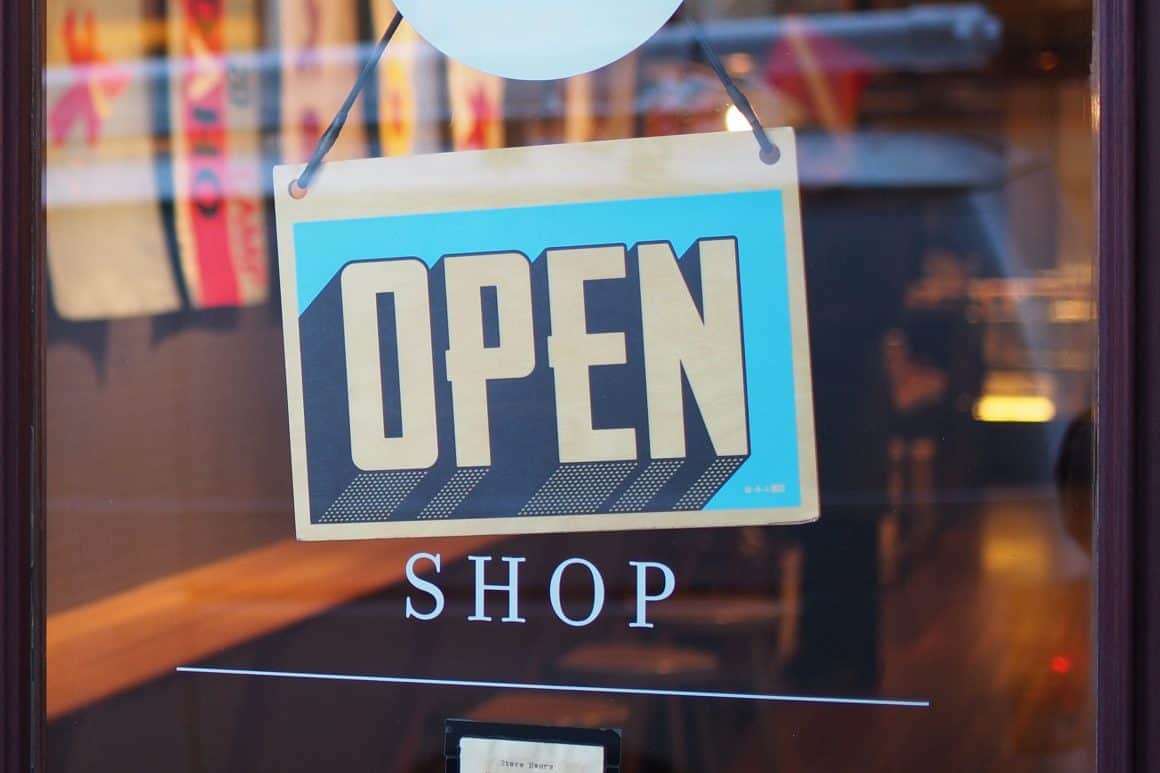
Want 4-Hour Workweek for Free?
Right now you can get the 4-Hour Workweek audio book for free if you sign up for Audible and grab a 30-day free trial. Cancel anytime, no questions asked.
2. Work & Finance
How much money digital nomads make or how to raise money for a trip varies as much as it does before you become one. It boils down to what job you have, how many hours you work, and what you do on the side (if anything at all).
Before I started to travel I approached working from home by putting work into two categories; client work (primary income) and side hustle (secondary, passive income).
Your goal is to do both, and then grow your secondary income out until it fully replaces your primary income and has passive elements to it.
Your primary income is a remote job you can do competently, don’t totally hate, and pays the bills. It’s the money you use in the beginning to pay all those expenses I listed earlier.
Your secondary income can be anything. A hobby-turned-business. Going through a few ideas and failing more than a few times is almost a certainty, but eventually you’ll hit the jackpot.
For my primary income, I was able to Jerry Maguire my old clients from a series of cubicle jobs and port them into my new, legitimate work from home consulting business. I worked remotely for years before becoming a digital nomad.
When I came to Asia, I was able to work less and focus more time on my side projects which were mostly affiliate marketing sites. Once I got those going, I started Hobo with a Laptop to journal how I did it.
My secondary income soon replaced my original primary income. Now I don’t have one primary income at all, I have several secondary incomes –a diversified revenue stream.
Today I only take client work when I’m passionate about the project itself, it’s not about the money anymore. That base is covered.
What Are You Going to Do?
Discovering what kind of work you can do sustainably while living a nomadic lifestyle requires some soul-searching.
What sort of nomad freelance jobs are you built for?
To answer this question we had Jacob Lyda come on board and write a guest post about his experience figuring out what sort of digital nomad job he could do without doing his head in.
Like most posts about how digital nomads make money, he took the career Venn diagram approach; you can view his post here.
Got Followers? Monetize Them!
Creating exclusive members-only content is a great way to build a reliable income with your blog or social media channels.
Monthly Q and A livestreams, personal video “postcards” from the road, and other forms of exclusive content are a great way to monetize your blog or social media profiles with SubscribeStar.
SubscribeStar is the leading Patreon alternative because of the size of its existing user base, its drastically lower fees, quick payouts, and its livestreaming features.
A SubscribeStar account can be setup in minutes, check them out by clicking the button below.
Learn More
How Digital Nomads Make Money
Hobo with a Laptop is a resource that helps digital nomads make money through a wide range of ways; cryptocurrencies, blogging, nomad freelance, and remote jobs to name a few. This isn’t a “make money online” post –it’s too diverse a subject. Instead, we’ll look at how digital nomads make money at a high level.
There’s a lot of different ways to create your primary income stream. The path of least resistance would be finding a way to turn what you’re already doing into an online job.
If your employer won’t budge on allowing you to work remotely being a digital nomad, find the same job description at another company that does.
FlexJobs (our review) is a reliable source of remote jobs and nomad freelance work –they screen out deadbeat employers so you don’t waste your time applying for garbage jobs, and that’s why we endorse them all over Hobo with a Laptop –we’re not being paid to do so, although we are affiliates for them and their competitors.
If you lack work experience, consider an entry-level remote job or join “gig economy” sites like Upwork to support your nomadic lifestyle. Just be warned; Upwork and Fiverr take 20% from every cent you make. And that’s on top of your taxes.
Related: I Need Money, Fast! How to Make Quick Cash
We wrote a guide called How to Get Part Time Remote Jobs (and Where to Find Them) –and it packs enough information for anyone looking for their first remote job (even if it’s not part-time).
In that guide we explain:
- The 3 types of remote job sites
- Benefits of working remotely
- How to apply for remote jobs
- How to mitigate competition
- How to come up in search results
- How to demonstrate your ability
- How to write your cover letter
Of course, there are plenty of other ways to make money online, but if you’re just starting out many of them would fall into a secondary income side hustle.
Read: Location Independent Jobs That Are Always Hiring –this article links to active search results on FlexJobs for digital nomad jobs that you can apply for today.
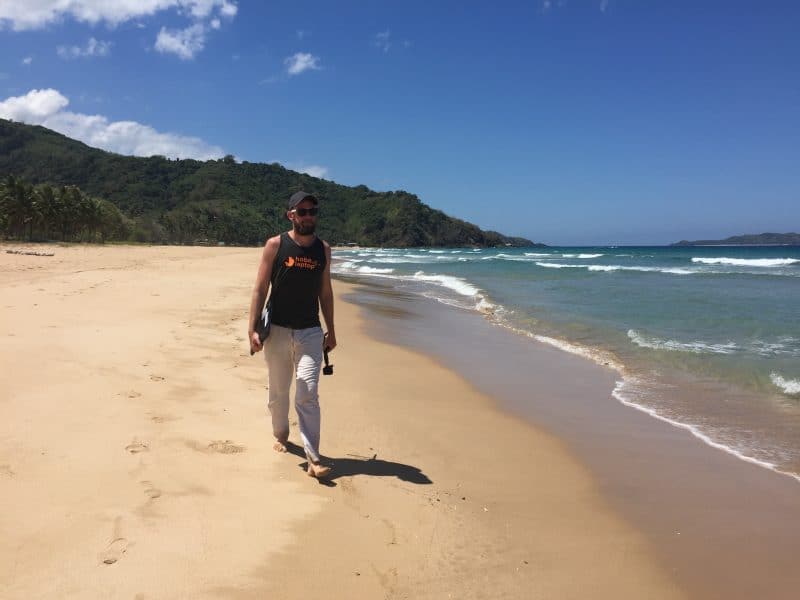
The Side Hustle
Side hustles are too sporadic to rely on full-time until they’ve matured, and that could take years to make happen.
A good side hustle won’t necessarily provide any online income right out of the gate, but because your primary income is handled you can take your time getting it right. Later on, it will become how to raise money for a trip with little effort.
Some popular side hustles include:
- Blogging with affiliate marketing and/or selling info products like ebooks or courses
- Drop shipping with Amazon FBA, Shopify, or BigCommerce
- Creating t-shirts, hats, posters, or carrier bags with sites like TeeSpring, Amazon Merch, or CafePress
- Creating simple apps that do one thing really well –interviewing people inside an industry will improve your chances of success
- Creating WordPress plugins and themes
- Selling photos on sites like iStock or producing royalty-free music for sites like AudioHive –there’s a marketplace for everything and other examples include Photoshop templates for stationary, automation scripts, and OBS templates for YouTube and Twitch streamers
- Starting a tour business; whatever you’re into could be the foundation of a tour –Nomad is Beautiful run photography tours, Remote Year and Nomad Cruise tour various locations with a gaggle of nomads, and Wandering Earl built an empire on running tours off his blog (after awhile, they run themselves)
A key element of a successful side hustle is income that’s somewhat passive. You want to wake up most mornings after having made money while you slept, and you don’t want to create another job you’ll grow to hate.
Marketing Yourself or Your Idea
No matter which way you go, if you are going to make money online you’re going to have to learn some internet marketing skills.
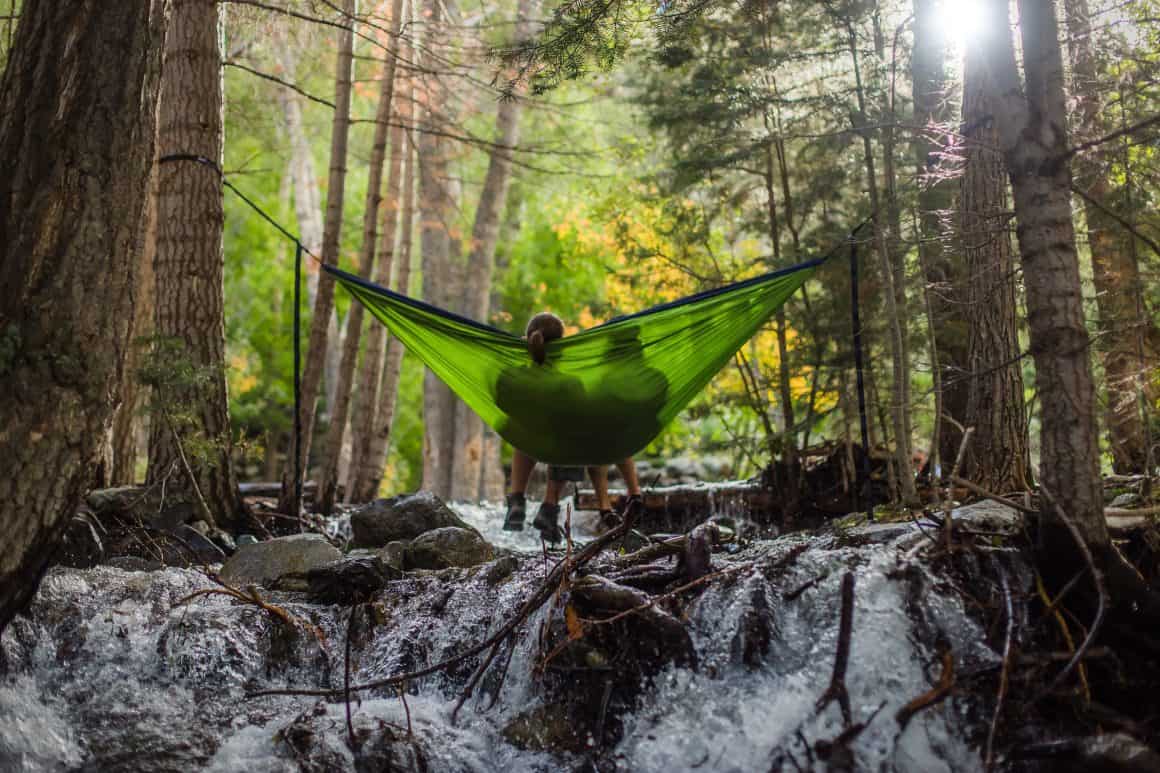
Search Engine Optimization
Every marketplace, whether it’s for jobs (Linked In, Upwork, Fiverr, etc.) or digital products you’re selling (Amazon, Etsy, etc.), is a search engine. I recommend learning the basics of search engine optimization. Most search engines work the same way, but there are going to be certain techniques that are specific to each.
We’ve written a few articles to help you understand SEO:
In all of those guides, I recommend picking up a really cheap SEO tool called KeySearch. Almost everyone knows what MOZ or Ahrefs is, KeySearch is a lesser-known, cheaper alternative.
The reason a paid keyword tool is so important is because it doesn’t matter what sort of traffic you could get for a keyword, it matters whether or not you have a chance of ranking for it.
All the free keyword tools like Keywords Everywhere give you traffic volume, none give you competition scores. As in, tell you who is already ranking for said keyword and compare their metrics to your own.
The trick is to go after keywords that are easier to rank for, with less competition, and throw down 5 – 10 different, lower traffic keywords into an article instead of going for a couple really high volume and super competitive ones.
You can check out KeySearch here for more information.

Starting a Blog
The reason we cover blogging so much on Hobo with a Laptop is because of how much client work it got us and how much passive income it generates.
We didn’t even have a “work with us” page when we started getting client requests. A nice website is your calling card, no matter what you’re doing.
Blogging will open up the world to you; amazing new clients, passive income from affiliate referrals, and sponsorships that find you without any work on your own part.
Once our site started to rank, sponsorships started to come out of the woodwork and fill out our contact form. We were making a few grand per month with sponsorships for doing very little before we had to slow down and start saying no.
Here’s a few articles to help you start your blog:
- Blogger Rate Card: How Much to Charge for Sponsored Content
- What Should I Blog About?
- How to Start a Blog with WordPress
- Premium WordPress Theme Buyer’s Guide
Now might be the time to take blogging even more seriously and build your own blog.
Fun fact: Ugly websites tend to make more money because they make you seem more approachable. I’m not saying this to encourage you to build an ugly website –don’t, if you can avoid it. But if your site is ugly, don’t worry about it too much.
A great blog is an asset that matures over time.
The sooner you start one, the better –even if you’re still figuring out how to become a digital nomad and aren’t sure what to do with it. Domain age is a ranking factor.
I originally started Hobo with a Laptop before I got on a plane, way back in 2012. I didn’t do much with it and left it idle until rebooting it in 2017 when my intentions were clearer. The time it sat around idle helped give us a head start on a few important ranking metrics.
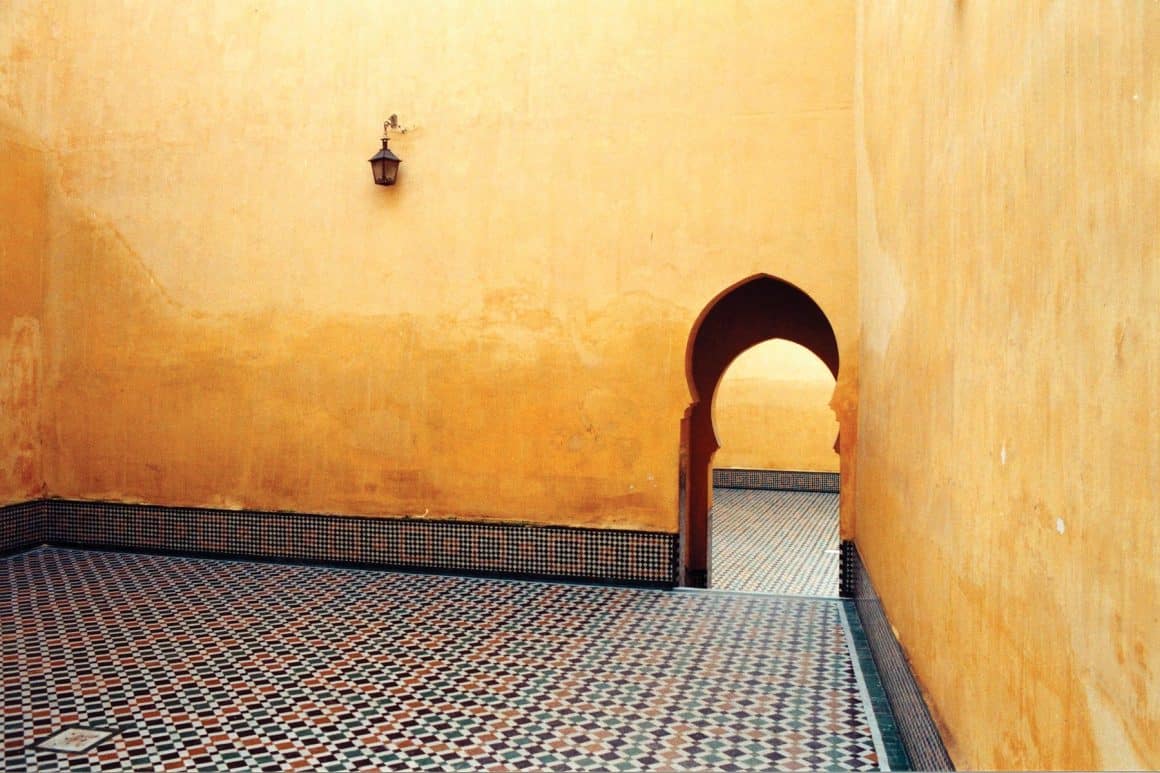
Saving Money By Any Means Necessary
Before you become a digital nomad, you’re going to have to find ways to build your war chest and figure out how to raise money for a trip –and that usually means trading time for money.
You don’t yet have the luxury of a lower cost of living, so working on a side hustle will be harder. Instead, I suggest your roll your sleeves up and work like there’s no tomorrow.
“Work harder than most people are willing to today, and live like most people wish they could tomorrow”
When you’ve got a part-time job, your second (or third) part time job(s) need to have flexible hours or be relatively passive.
The gig economy is far bigger than Fiverr, Upwork, and Uber. There are plenty of other apps where you can trade a service for money while you’re still physically living in your home country to raise money for a trip. And no, no survey apps. Those things monopolize your precious time.
The following apps will help you make extra money on the side:
- Rent out a room in your apartment on Airbnb
- Become a driver for Uber, Grab, or Lyft
- Provide child care and drive kids around with Kango
- Rent out your vehicle with Fluid Market
- Sell your stuff with Mercari or Ebay
- Sell your best photos on iStock
- Become a mystery shopper with Field Agent
- Walk dogs and pet sit with Wag
- Get Hoopla, link it to your library card, and legally “borrow” books, movies, and audiobooks for free
These apps are just a small sample of what’s out there, others are only a Google search away.
Related: How to Get Money Fast
Cutting Expenses
Some expenses aren’t just expenses; they’re time vampires, too. They suck up your time and drain your motivation. Dopamine hits for modern slaves.
You could always kill your time vampires right away to keep you motivated; sell the Playstation along with your television, cancel monthly app subscriptions, uninstall Mega Man from your smartphone, and switch from Starbucks to Nescafe.
Make a list of all the things that give you a dopamine hit, and axe them. Dopamine is the best place to start The Purge, which I will get into later.
You know the drill; $5 per day at Starbucks is $150 per month. 6 latte-free months is $1,000 in the savings account.
Once you start trimming your spending habits, you could save enough money to forgo any additional work altogether.
Look for couponing apps. If you’re creative about making ends meet and you’re determined to make your nomadic lifestyle become a reality, you will. It just might take time.
I sat on the “runway”, so to speak, for two years before I bought a one-way ticket to Thailand. Patience is everything, play the long game intelligently. Keep your feelings out of it.

3. Purge
Purging unnecessary physical possessions to be a digital nomad, I imagine, is like overcoming a heroin addiction. At first you’re like, hell no.
For heroin use, it’s the needle that people can’t wrap their head around. Needles are grody and the sight of one makes me want to pass out.
For a person who wants to be a digital nomad, it’s “..but I can’t live without my coffee table! I’ve had it for 3 years and IKEA discontinued them! Oh, the suffering! Where will I put my doilies? I can’t do this!”.
After a few items go on Craigslist –“oh, that sorta’ felt good”.
I guess losing your virginity might have been a better example, but I was trying to avoid being gross. It’s awkward at first, you don’t know the order of operations. It starts out as a painful experience.
After you find a good home for the things you could have always done without, it starts to get addictive. You become a purge addict.
When empty spots begin to appear in your apartment, it’s your friends calling you crazy that actually riles you to purge more.
“But you loved your PlayStation! You’re really doing this, aren’t you?”
F*ck right you are, because you’re a digital nomad.

Beginning the Purge
It’s time for another list; write a list of everything you use daily, and then write a second list of everything that didn’t make the first list. Start purging whatever is on the second list.
If you don’t use something at least once a week, get rid of it.
Leave family heirlooms with friends, your folks, or a weather-proof climate controlled storage unit. Keep them off the floor and don’t let plastic coverings touch them directly because they build moisture over time and can ruin furniture.
I recommend you digitize personal items like old mementos, diaries, and love letters because whatever you leave behind will likely get rummaged through by your mom or other curious friends or family members.
Personally, I digitized what I could and then had a big going away bonfire bash with my friends. I left behind a bankers box of photos with my mom, and that was that.
Later I came back and tossed it down the garbage chute and wondered why I bothered –people took really pointless photo prints in the 90’s –it was all stuff I’d have deleted if it were digital, anyway.
If you want to avoid that ashamed ‘knowing’ look siblings give you when they rummaged through your goods, scan it and burn it. Read love letters one last time, memorize them, and say goodbye.
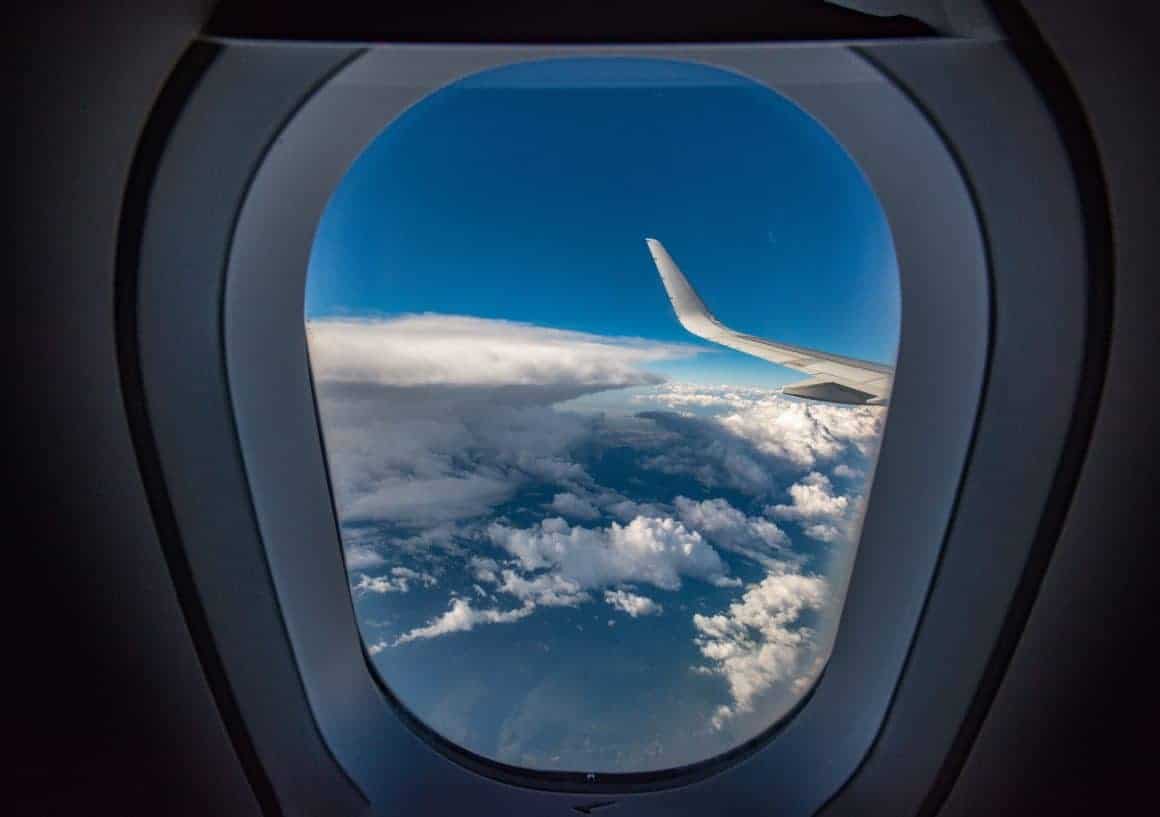
4. Nomad Gear
Now comes the fun part –what to put on your own digital nomad packing list.
I still love browsing other people’s digital nomad packing lists; you know what I’m talking about. Those bloggers who take really great photos of their belongings all neatly laid out on the floor.
Their backpacks are still shiny because they’ve never seen a monsoon. Their gear is the result of months of carefully read product reviews. They’re so damn proud.
As they should be, they survived The Purge and rewarded themselves with their new nomad gear –everything in their luggage has a purpose.
Related: Unique Travel Gifts for Digital Nomads
What to Bring
The same rules of The Purge apply to your digital nomad packing list; if you’re not going to use it often or it isn’t going to help enrich your life somehow, like help you make money online or simplify your life, it doesn’t go in your backpack or suitcase.
And you’re in luck. I’ve written about nomad gear extensively with the help of my wife. We have several articles written about nomad gear:
- Digital Nomad Packing Lists (His and Hers)
- 60+ Tools for Business Travel
- Big Fat List of Unique Travel Gifts for Digital Nomads
- Best GPS Trackers for Luggage, Kids, Pets, and Personal Safety
- Tools to Speed Up Internet
Between those six massive posts, you’re all set. We cover the best backpack for digital nomads, plug adapters, solar chargers, clothing for hot or cold temperatures, and a bunch of other things I know you’ll find helpful for your nomadic lifestyle.
My top 5 digital nomad packing list items:
- Skyroam Solis portable international hotspot
- Osprey Farpoint 70 backpack with removable day pack
- Dell XPS 13 9370 laptop
- Any clothing made from Merino Wool
- FlexJobs annual membership for emergency cash
Beyond that, all I really need is my passport, keys, smartphone, and wallet. I’ve upsized and downsized a number of times over the years, but these top 5 make my nomadic lifestyle complete.
Our other frequently-used items are just bathing suits, our two GoPro cameras and accessories, Blue Yeti mic, a lot of plain white t-shirts, and a few power banks.
If we ever need anything else, we’re big fans of Lazada, the Amazon of Asia. It has a cash on delivery payment option so you never get ripped off. It’s where I get all my hard to find health supplements.
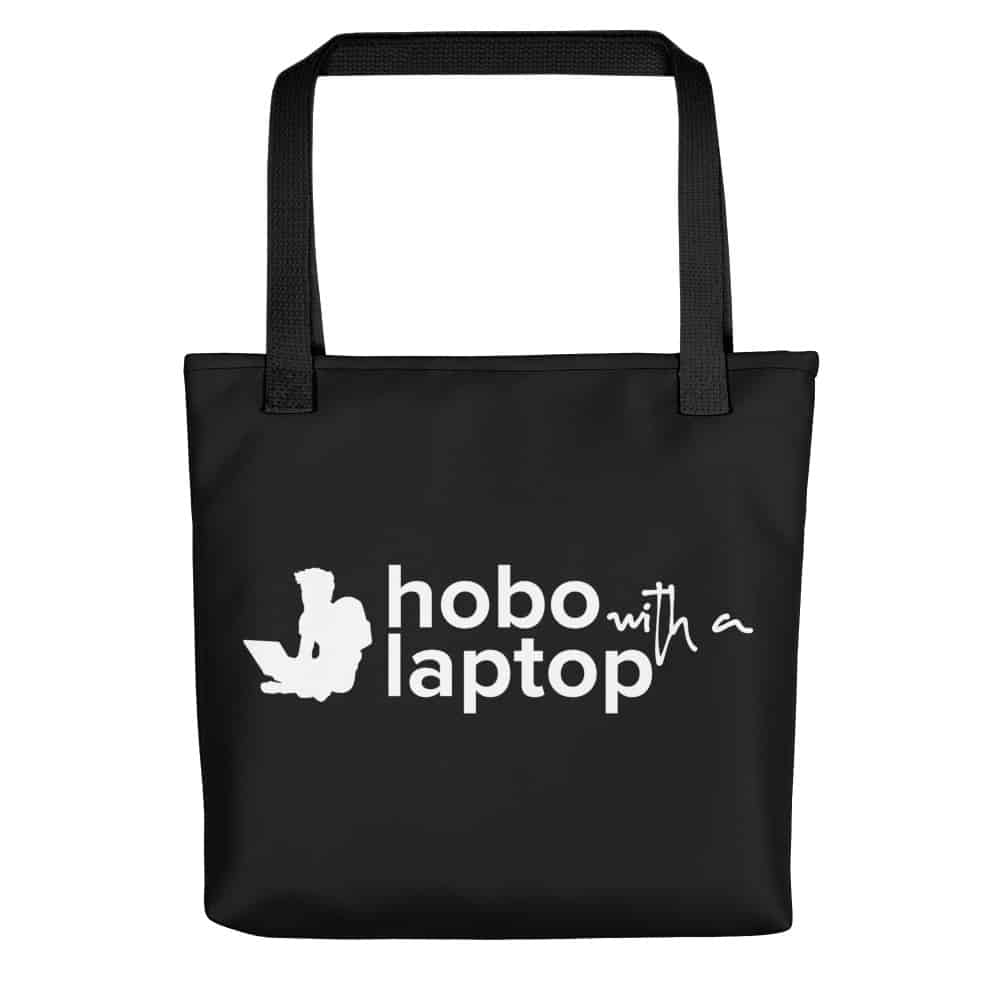
Don’t Buy That New Smartphone.. Yet
It’s common for those planning for living a nomadic lifestyle to want to upgrade their smartphone before they leave. Here’s why it’s a bad idea.
The US and many Western countries don’t have high quality, cheaper smartphone brands available. In Asia for example, it’s easy to get a top notch smartphone made by Asus, Xiaomi, Oppo, Huawei, and others at a fraction of the cost of alternative flagship brands back home.
Further to this, dual SIM phones are more expensive and hard to find in the US. In contrast, they’re much more common and more affordable in other countries. A dual SIM phone will allow you to play off multiple telephone companies conveniently, so you’re always tethering with the fastest data connection available.
And finally, the bands and frequencies employed by US telephone companies and manufacturers are different from those used in other parts of the world.
You’re going to be relying on mobile data, don’t chance it with a US smartphone abroad if you can avoid it. Instead, shop around online for smartphone models that are available in your destination country. That way when you arrive, you already have your selection in mind and can budget for it.

5. Destination
Where you headed? Bali? Chiang Mai? Austin, Texas? Philippines? This one’s entirely on you, but I can throw my two cents into the hat.
If you’re not totally comfortable to go completely solo or still learning how to become a digital nomad, I suggest you go to a popular digital nomad destination. That way you’ve got some other local nomads to make friends and network with.
In a sense, the world is your own personal digital nomad academy campus. Nomads who have been at it a long time tend to hang with more settled nomads, and beginners are eager to mingle with others who are going through the same struggle.
The digital nomads you meet in the beginning will likely make for fast friends of the life-long variety, and that’s why your first digital nomad destination is the most important one. It’s a launch pad for more than a lower cost of living and an improved quality of life.
So choose wisely.
Of all the top digital nomad destinations, I think most can agree with me that the following are some of the best places to start:
- Chiang Mai, Thailand
- Bali, Indonesia
- Gran Canaria, Canary Islands
- Medellín, Colombia
- Budapest, Hungary
- Prague, Czech Republic
If you head to Thailand, it’s worth mention that Bangkok, Ao Nang in Krabi Province, Koh Lanta and Koh Tao are great places to live. I’d also recommend visiting Khao Sok National Park because they have floating bungalows and a pristine limestone-bottom freshwater lake.
Currently I’m in Palawan, Philippines. I love it, I have a family here now which makes it easier. In the future my wife and I will be writing a number of guides for this nomad-friendly location.
I’ve already discussed important considerations when choosing your first nomad destination way back in the Logistics section of this How to Become a Digital Nomad guide –so be sure to scroll back up and read it again when you’re ready to select a your first digital nomad destination.

6. Getting Over the Mindset Molehill
The key takeaway from this nomadic lifestyle guide is to simplify, simplify, simplify –both mentally and materially. Keep an open mind, and don’t try to recreate your life back home, abroad.
There’s no bigger mystery to becoming a digital nomad beyond developing the right perspective and expectations over time, and learning how to be a resourceful traveler in the countries you inhabit.
The standalone act of becoming a digital nomad is like assembling IKEA furniture; it’s little more than an order of operations. Anyone can “crack the code” if they want to.
Don’t mystify it, fear it, or build it up in your mind bigger than it should be.
Whether you’re a graduate fresh out of university with only a gap year to spare –or a highschool dropout who feels like their prospects are limited, you’ve probably got all the life experience you need in your head to travel the world and get paid.
For everything you might lack, there’s Skillshare and entry-level remote jobs for those with little or no work experience on their CV.
You just read an entire guide that deconstructed and boiled down over six years of nomad life experience –there are no secrets, you now know everything you need to know about how to be a digital nomad.
And to make it even easier, download the free How to Become a Digital Nomad checklist at the end of this article. It’s not much, but it will cover the basics you might otherwise forget to bring or plan for –and downloading it will add you to our mailing list so we can keep in touch.

Yes, You Can!
This last lap of the article speaks to a very small subset of readers who are on the fence and likely to consider giving up before making a commitment. The window shoppers and critics who have an “I can’t, because..” attitude. You know who you are.
If you want to become a digital nomad, it’s time to check your mindset and use it to push yourself forward, not push yourself down.
There’s a lot of obstacles to overcome before you can be a digital nomad. I won’t belittle them, I know it’s a tall order.
“I don’t have the skills you do!”
The worst thing you can do is try to reinvent yourself or learn an entirely new skill if you’re not ready just because someone told you that’s what they did, and it works. Because what works for them might not work for you –and that’s okay.
Let it be okay! Let you be enough for you, just build on what you already know. Don’t get stuck in a loop of starting over from scratch. Don’t compare yourself to others.
Learning how to become a digital nomad is already an emotional roller coaster. Our reasons for wanting to live a nomadic lifestyle overcomplicate things. For some reason, stress makes us look for holes to fill instead of seeing our existing marketable strengths clearly.
If you’re good at something, learn how to sell that something. Like I said earlier, how digital nomads make money typically comes down to identifying 1-3 things you’re already good at, learning how to market them and then charge a fair price.
“Marketing yourself” is rhetoric for learning some SEO and articulating what you offer on a website like a blog, Facebook group, Linked In, or Upwork because they all have a built-in search function.
If you had to learn one new skill to compliment your existing skills, make it internet marketing –SEO, writing convincing words, and getting your message right.
Don’t waste your time on pretty personal branding –focus on your substance. You don’t need to fake it ’till you make it, remote work is mostly results-oriented. Too many digital nomad wannabes, mommy bloggers, boss babes, startup bros, and “entrepreneurs” put their image before their substance and their success is imaginary. Don’t fall into that trap.
The best way to succeed is by helping others overcome obstacles that you’ve already overcome.
If you don’t learn how to sell yourself effectively, you’ll wind up working for someone else who can and will sell you like a crate of apples. Save the personal reinvention until after you reach the beach and you’ve lowered both your cost of living, and your stress levels.
I went to college around 26 and took web design and Macromedia Flash animation courses. Neither serve me today because a lot has changed since I took them in 2010. My education is obsolete.
Yes, the nerdy among you will say “Macromedia?”.
To make my nomad life more difficult, I’m an ecommerce consultant who hasn’t touched ecommerce much since I became a nomad. My relevant “digital nomad skills” in 2013 were writing and communication, with a dibble of WordPress and Photoshop knowledge. That’s all I started with.
Every year I invest time into online courses to upgrade my skills, it’s the only way to survive a digital nomad lifestyle long-term. When you look around Hobo with a Laptop you’re looking at a bunch of skills I learned to do myself after becoming a digital nomad. In my past life I used to pay other people on my team to do what I can do now.

“I’m a visible minority! I’m from the developing world!”
The digital nomad lifestyle is not a socio-economic class. The opportunity is there, but the outcome won’t be the same for everyone. You may have passport limitations, no money in your savings account, and no one close by to embrace the journey with you.
Welcome to the club.
At a minimum, $600 – $1,000 USD per month is more than enough for a digital nomad to live on a beach in Thailand or the Philippines (and it’s often a lot more than the locals make).
Early adopters usually get under the bar before they move it, although some creativity may be required.
For example;
If you’re able to comfortably read this English blog post over an internet connection, odds are in your favor that you could:
- Contact an SEO company in your country and ask to be a writer, as they often go through writers like water
- Seek out successful bloggers, digital nomads, YouTubers, podcasters, or people who work from home –anyone who “gets it”– look for areas you can help them move up in their career, and then offer services appropriately
- Apply for an entry-level remote job from a reputable business –simple, repetitive tasks that are typically reserved for low-level employees and interns; the lower wage won’t matter much when you’re living in a country where that currency goes further
Nomad beginners with fewer online job options could make a liveable digital nomad salary off creating Pinterest pins on Fiverr, for instance. My wife Oshin, a Filipina digital nomad, made enough on Fiverr that she didn’t depend on anyone but herself financially. And she doesn’t consider it hell, either –she’s still doing it for our peers when she isn’t financially obligated to.
If you want it bad enough, you do what you gotta’ do.
Years back, I had done tasks for numerous friends and peers during the slow times because I was good at identifying ways I could help them, and then demonstrating it with my own online activities (our blog being the number one icebreaker).
Although we’re not hiring and we don’t do job placements for our readers (that’s what this website is for), we and our peers frequently call upon freelancers we’ve built relationships with over the years. It’s not weird to cold approach people with a suggestion and a solution if it’s valuable.
On US accounting;
In some situations, non-US citizens are overlooked for remote jobs they’re qualified for. On the internet, the color of your skin is invisible. Although your billing address isn’t.
In such cases, aspiring digital nomads from the developing world can get a US billing address with Earth Class Mail and a US bank account with Payoneer. It won’t get you a US Tax ID but it makes you easier to work with and still looks better on paper, if looking good on paper matters.
Progress is happening, fast;
Digital nomads who are successful today and started out 5 – 10 years ago didn’t have access to the free information and online tools you’ve got right here in front of you.
Today, there’s free and cheap educational resources like Code Academy, iTunes U, TED talks, and Skillshare.
There’s a whole internet of remote jobs out there. For every 10 rejections, there’s going to be one paycheck.
“I have kids!”
“I’m a woman!”
“I’m too old!”
I’ve met single income nomad families with young kids, 70-year old widowed retirees with successful ecommerce sites, solo female travelers who make really good money blogging, backpackers who are YouTube gods, plenty of single moms with stay at home mom jobs, and too many nomad freelancers from developing countries to count. (I mostly live in the Philippines with my wife, a country full of nomad virtual assistants —it’s how we met).
Our kids are going to enter this world as digital nomads.
Over a third of my own personal digital nomad community is composed of people of color, and a majority of them are women. In fact, according to that survey by FlexJobs, 70% of digital nomads are female. Again, that study is here.

You can, you can, you can. If you give yourself permission.
When FlexJobs asked working nomads to choose the career field they work in, these were the top 10 digital nomad jobs they reported:
- Writing
- Education & Training
- Administrative
- Customer Service
- Art & Creative
- Computer & IT
- Consulting
- Data Entry
- Marketing
- Project Management
Legitimate online jobs like data entry, customer service, writing, creative, and internet marketing will level the playing field for most people reading this post, all over the world. I made the links above clickable so you can take a look at what they have available, right now.
Related: Top 25 Businesses Hiring Remote Job Positions
In spite of what some social justice warriors have told me in the comments of this blog, becoming a digital nomad has little to do with the privilege of your race, religion, gender, trust fund, or how the digital nomad lifestyle “is represented”.
It’s not all fat white nerdy men lounging on beaches. That thinking is as long in the tooth as the intersectional identity politics that go with it.
Special Discounts for Lonely Planet
Check out Lonely Planet’s book shop for more travel information. With our link you are eligible for discounts other people won’t receive, and free shipping on orders over $40 USD (or $50 CAD).
They often run Buy One, Get One deals –so check it out.
Visit Lonely Planet
Kill Your Idols & Choose Your Own Adventure
Becoming a digital nomad is a pretty new pet for the newly converted, and many of us are so damned proud that we made the leap and abdicated convention that we want to inspire others to do the same.
The proliferation of happy-go-lucky photos on Instagram are only a symptom of a greater effort that doesn’t translate well on Instagram –don’t look at the finger, look at where it’s pointing.
Being a nomad is so subjective it can’t be distilled and taught because there are far too many variables. No one is going to have all the answers because any lifestyle is the sum of many parts.
Even more so, age groups shake things up quite a bit. As per that earlier FlexJobs study; 27% of digital nomads identify as Millennials, 41% identify as Generation X (that’s where I’m at), and 32% identify as Baby Boomers.
A 24 year-old programmer’s digital nomad lifestyle is going to vary dramatically from a copywriter who’s 49. Blog posts and “digital nomad courses” struggle under the weight of trying to be everything to everyone, as would any digital nomad coach.
At most, a nomad business coach might prescribe courses to flesh out new skills, take on some of the work for you, make a few introductions, and be an accountability buddy –that’s how I approach it although I don’t take many nomad coaching requests.
Travel Insurance, Simplified
We recently reviewed World Nomads and Safetywing, the top two travel insurance providers among long-term travelers and digital nomads.
Safetywing is incredibly economical, but is it comprehensive enough for your needs? World Nomads offers more coverage, but is it too much?
Find out, read our side-by-side comparison.
Learn More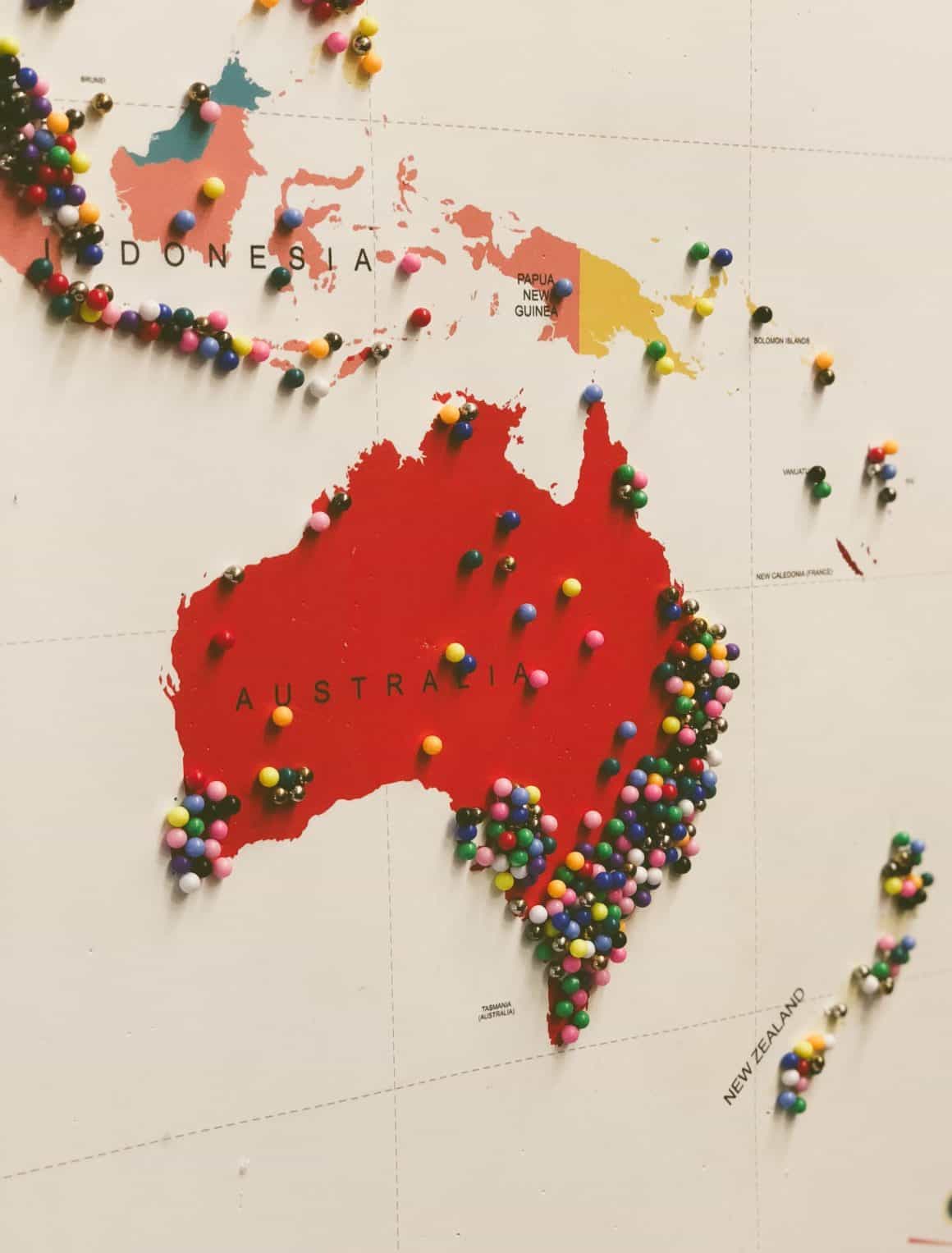
Want 4-Hour Workweek for Free?
Right now you can get the 4-Hour Workweek audio book for free if you sign up for Audible and grab a 30-day free trial. Cancel anytime, no questions asked.
In Conclusion
Congrats, you just read 8,000 words and counting. If you made it this far, I commend your commitment.
In this guide I did my best to cover all the nuts and bolts, but nobody can tell you what a nomad “should” be. That’s for you to make up as you go along. It’s a race where your only competition is yourself.
Focus, good humour, and commitment are everything.
We all have our reasons for being a nomad. For some, it’s scouring the world for their soul mate, or to incubate an idea and launch a startup.
For some local nomads it’s to escape social unrest and get away from a toxic situation back home.
If in the end, after all this, you decide not to become a nomad –at least you gave it an honest, hard look. There’s absolutely no shame in taking a pass, you can always pick this up in a few years, or not at all. Although by my guess, we’ll all be working nomads one day in one form or another.
If you do decide to move forward with your dream lifestyle, I have one more article for you to read: How to Handle Criticism for Deciding to Become a Digital Nomad.
It’s a timely read if you’re about to go through with it.
To help you on your way, I’d also like to share my How to Become a Digital Nomad checklist; it’s a downloadable PDF you can print to keep track of your progress. It’s nothing fancy, but it should do the job.
If you found our guide helpful or think it’s a constructive conversation-starter, I’d really appreciate it if you share it on Facebook, Reddit, Pinterest, Twitter –you name it.
You’ll be automatically subscribed to our newsletter when you provide your email to Gumroad. Direct download.
Did I leave anything out? If you have any questions about how to become a digital nomad with no experience or there’s a quote or point made in this article that stood out to you, please share it in the comments.
Big love from Palawan,





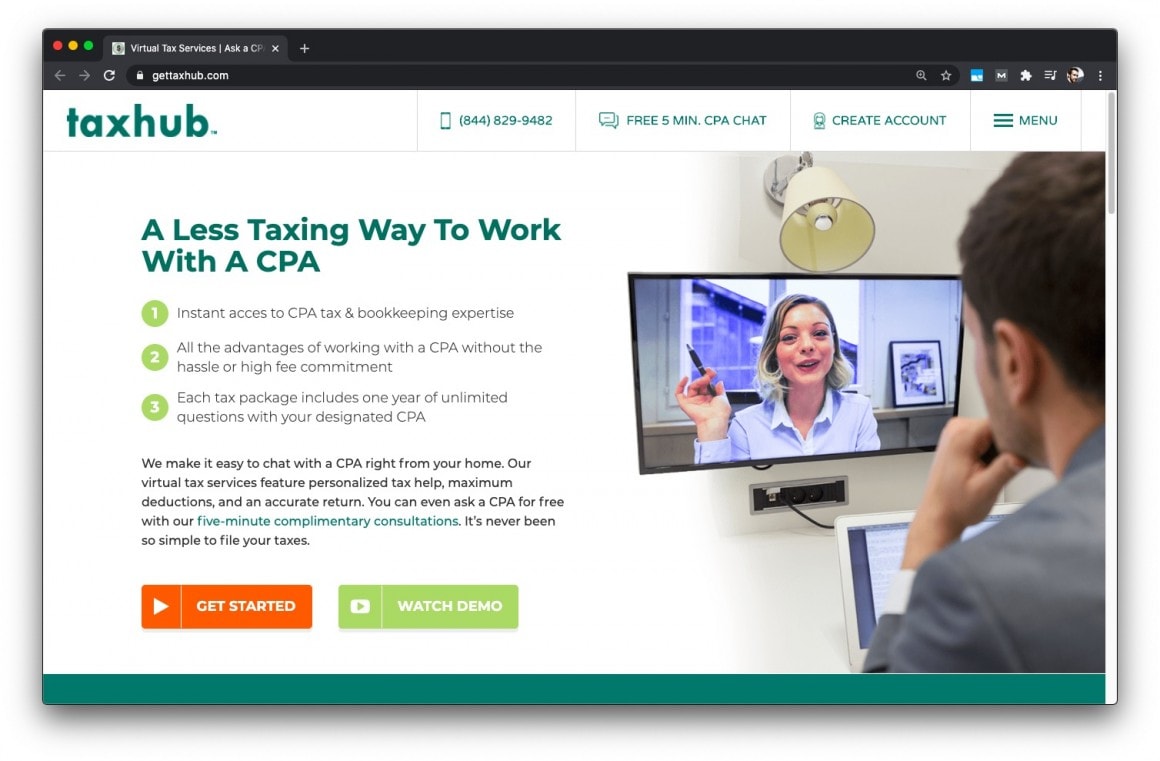
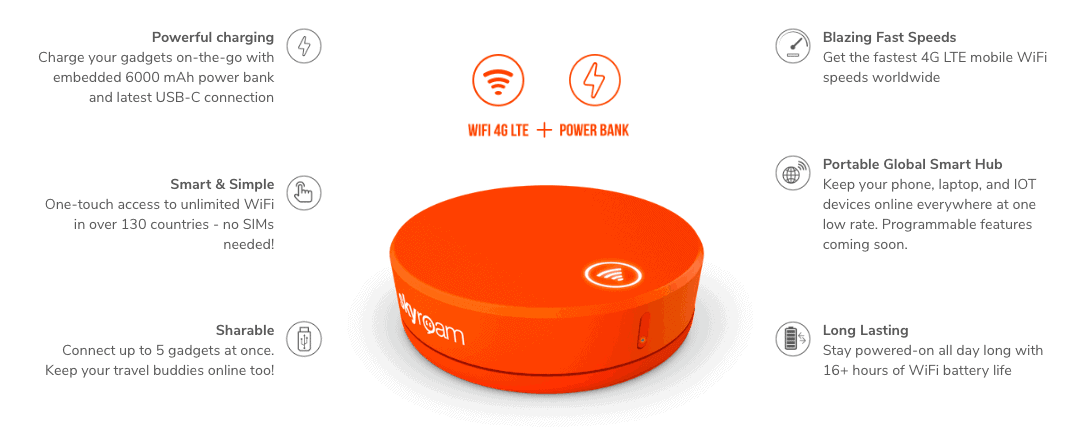
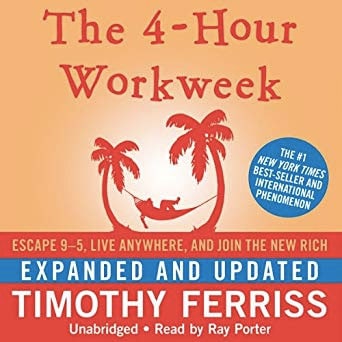
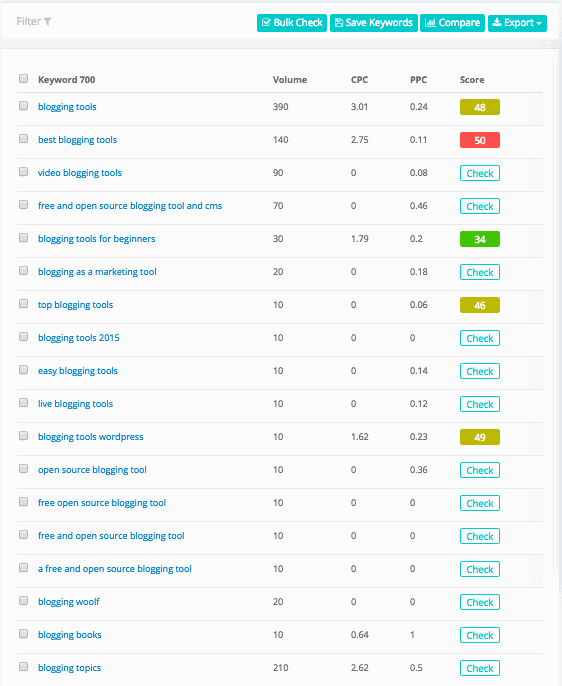
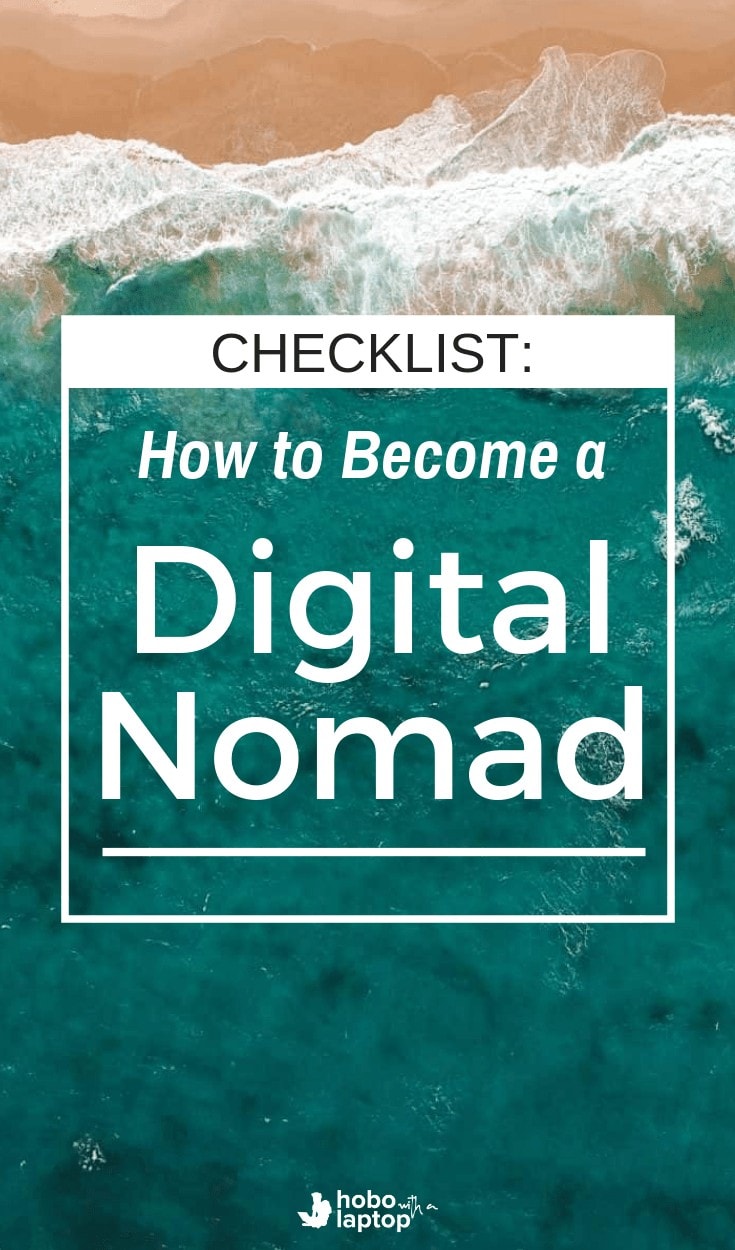

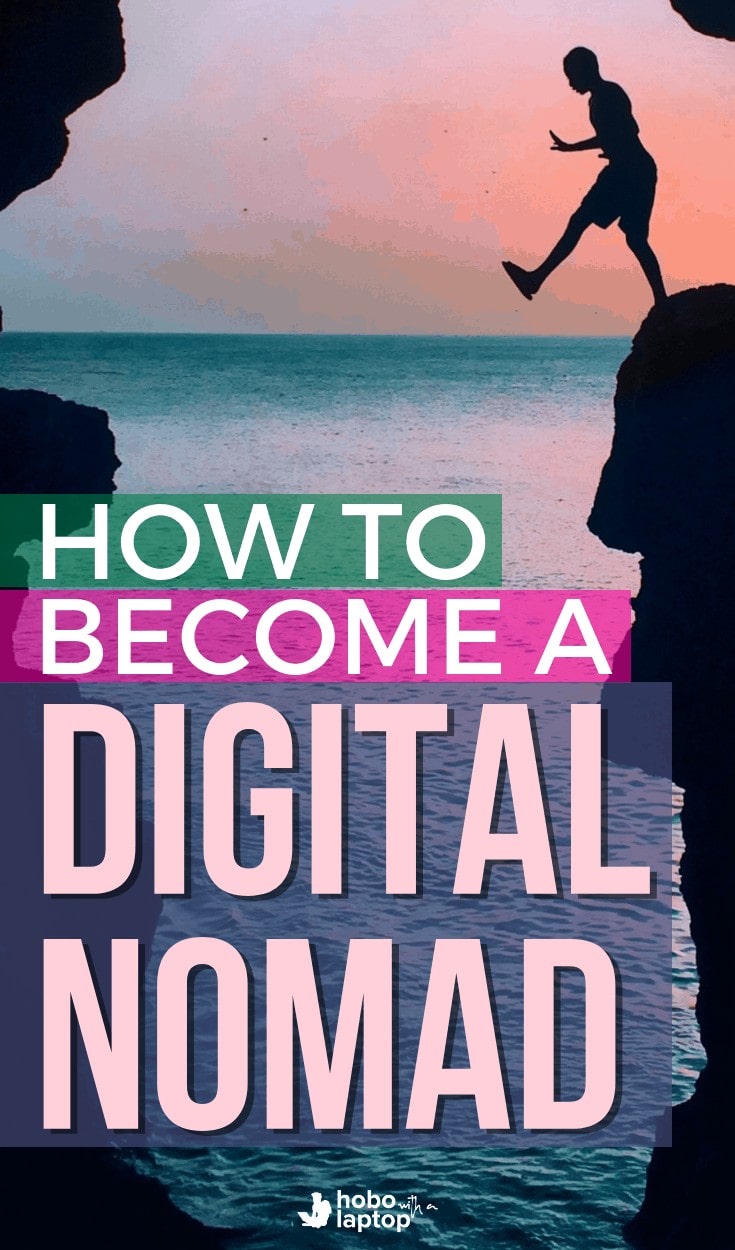


29 comments
Great tips to follow…Thanks for this post…i’ll recommend it!!
AAAAAAMMMAAAZINGGGG!
This is how I want to shout out loud at the moment. Believe me, it’s worth the 8000 words I listened to.
Lately, I’ve been getting butterflies in my tummy about this digital nomadic life (in a good way) it gives me happy cold goosebumps, every time I happen to think about it. Don’t know , is it some kind of intuition I’m getting ? Hahaha … Now you must be thinking, “that’s a lot of drama, there” Good lord, Yes it is;) ….. Still wondering, if I should do one.
Apparently, your post kind of gave me a green light signal , duh! …… Could you be my Nomadic God Angel??
Whatever it be…… You are AMAZING!
Love to you and your beloved family.
Dolienn Diaz
Glad you dig this guide, Dolienn. We’re currently working on a free course to go along with it! Stay tuned, and check out The Roaming Economy if you’d like to join our community when doors open in a few weeks.
Dang, Mike. No detail was spared in this one. What city would you settle in? (if you had to choose, of course)
Appreciate that Nick. Time, personal preference and circumstance have a lot to do with choosing where to settle.
For me, circumstance is the governing factor; there’s a “we” in my decision now.
My wife and I would like to start a family –knowing I’d like to grow old and secure in a country with the infrastructure for aging well (possibly back to Canada), I’m giving my wife more time with her family in the Philippines for the first decade or so of our lives together. Meaning that out of circumstance, for me, that’s going to be some corner of the Philippines for the foreseeable future with travel outside the country a few times every year.
Looking a little deeper; duration, comfort, a ‘compatible’ culture, and financial independence are often defining factors for others. I think it depends on what one was looking for when they left their home in the first place.
For example; Bali is nice becoming a digital nomad for awhile, but visas make it difficult to settle. Colombia is nice, but may be too hot (in more ways than the climate) for most to settle in. Often people settle in places where the living is easy, the visas are readily available –and they can still get sh*t done.
If we’re talking a year or two, I might have chosen a city in Japan, Singapore, or Brazil. Gran Canaria, Medellín, or Budapest also have a lot of potential.
I also estimate that Đà Nẵng, Vietnam is the next Chiang Mai because Thailand’s growing economy has gone to their heads, we’re not “the right kind of tourist” anymore.
Somewhere with a slower pace, rich culture, and a place that isn’t at each other’s throats like North America seems to be these days.
My focus has always been toward making money go further in order to keep saving for retirement. It makes life so much more satisfying when you’re not always worried about the future. Thus the lack of flashy photos and overtly lavish lifestyle on our blog.
Beyond that, check out Nomad List; they’ve got the “nutrition facts” about most popular digital nomad destinations to help you figure it out for yourself. I know that’s not the best answer, but I’ve only had one coffee so far this morning!
When you decide on a place, feel free to come back and share why you chose it. Appreciate you stopping by, don’t be a stranger.
Reall enjoying the site and content!
Wow, An amazing article on digital nomads, truly inspiring. keep sharing
I think one of the most difficult things is to find places where you can pay with your card, since in some destinations many neighbors is not so safe to be carrying cash so I could recommend that they always have a Paypal account, really has served me enough, both to receive payments and to issue them, I liked this erticulo quite enough, you’re right in each of the points, I totally agree with you!
WOW – Best article yet for the digital nomad. I’ll be launching on my adventure with my husband and 12 yr old son this July, starting in Bali. I’m so interested in your family-friendly places. It seems harder to find. The space is so new
Hi Amanda, really happy to hear from you! If you’re just starting out, Chiang Mai is a good follow-up after Bali, but the list is long of places that are good for nomad families. Did you see this article?
The sky is the limit and I will reserve my nomad destination suggestions for now –I bet you’ll meet some people on the road to inspire your next destination.
Travel in a pack at first if you can find one. After a few months, everything gets easier.
Thanks for your good website and information !
You’re welcome!
Hi Hobo with a Laptop,
I enjoy reading and doing research on becoming a Digital Nomad.
I am from South Africa, living in Vietnam. Do you have some crucial tips on how to start working on becoming a Digital Nomad?
I’m interested in starting a blog.
If there is websites, blogs you can refer to that goes more in depth on blogging and creating passive income as a blogger etc, it will help me a lot.
Best regards
Hey Roaan, thanks for your comment.
Check out our Learn Blogging directory page, it’s got everything you need to start a blog and make money blogging.
Most affiliate payments will be from companies around the world, so I suggest you get a Payoneer account to get paid.
It’s going to take time to make your blog profitable and you may want to get a remote job in the meantime.
You can find all of our best digital nomad blog posts here.
And finally, check out our main resources page for any other digital nomad tools you may need.
Hope that helps, thanks for stopping by!
This article is really useful for me. I made the big decision to miss my flight back home in January and stay in Nepal with my Nepalese boyfriend I’ve been with for a year. I’ve recently set up my travel blog on Friday aiming to blog full time. I’ve found these tips really helpful, thankyou hobo with a laptop.
Excellent decision! Happy to hear it Alexandra, glad you got something valuable from this article.
Thanks, Mike, for many valuable tips and gems of knowledge !
I too am in the process of breaking free of the hamster-wheel
and look forward to a new lifestyle of earning-on-the-go from now on.
Just want to share a hot tip for any Europeans among your readers :
consider switching to the mobile phone bank Revolut if you can,
and enjoy benefits as no-fee cash withdrawals, no-fee currency exchange
and keep multiple currencies in your e-wallet at any time!
Their services come with a travel/ health insurance, a built-in consierge service and what’s-not !!
I don’t now when they’ll offer their services to clients also outside of Europe,
but what they do for you is truly AWESOME..!! 😉
Cheers !
Awesome, great to hear Idar!
I’ve heard wonderful things about Revolut as well; I wonder how Brexit is going to affect our British readers once all is said and done.
We’ve stuck with more universal options Transferwise and Payoneer; both great digital nomad banking solutions for Europeans, and Payoneer is ideal for everyone else such as those from Canada, United States, India, the rest of Asia, Australia, New Zealand, etc.
We wrote about them here.
Really appreciate your comment and your advice, sincere best of luck Idar.
This was a fantastic read and well put together. I just came back from a trip to the Philippines two weeks ago and now I am getting ready for the digital nomad life come August. Thank you for this awesome resource!
Nice, happy to help Lindy and really appreciate the comment.
Oh my fak, you’re the best Mike! Seriously, thank you.
Also, that nomad insurance post, thanks for that too. I really had no idea and that stuff is too confusing for me to navigate. I really like how you broke it down, side by side.
Safetywinf for the win!
Peace and love.
Glad you dig our “how to be a digital nomad” guide (and our nomad insurance comparison), Reagan.
Thanks so much for leaving a comment, made my day.
Happy trails!
This was an awesome read. Great tips and hacks. Thank you!
Really glad you found it helpful Meagan! Thanks for your kind comment.
Wow really love your article, thats actually thrills my curiosity to become digital nomad one day.
I bet you do, spammy URL I deleted.
This is just wow! the meatiest one I have read and I thought it’s a mini course. I ahve taken notes of everything and favorited this so I can always come back in case I have forgotten anything. My goal is to be a digital nomad by next year so I am reading and learning as much as I can. I will be checking your other posts too. Cheers and more power to you and your wife. =)
https://thisvillagegirl.com
Really happy to hear you dig this post, Dani! Your comment means a lot.
Sincere best of luck on your journey, you got this!